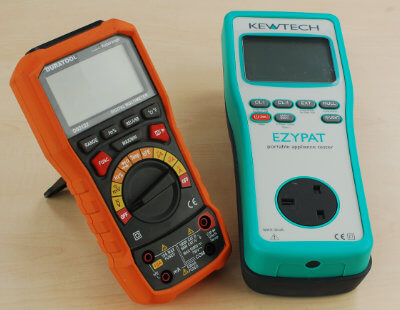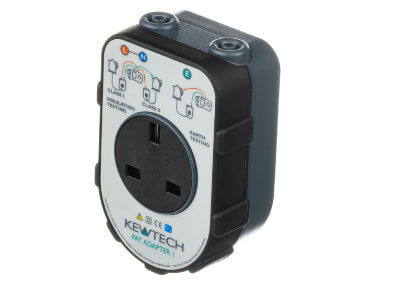Can a Multimeter be used for PAT Testing?

A multimeter, as its name suggests, can perform a range of functions. They can usually measure voltage, current and resistance and many models can also measure temperature, frequency, and capacitance. This makes them an essential tool for most electricians, engineers, and technicians. There are some great multimeters available for less than £30. So is it possible to save money by using a multimeter for portable appliance testing? The short answer is no, but let's explain the reasons for this by looking at the two main tests carried out during a standard PAT test.
Earth Continuity Test

The purpose of the earth continuity test is to measure the resistance of the earth circuit within the appliance. The resistance should be as low as possible. This is important because the resistance affects the amount of current that will flow in the event of a fault, and this in turn will affect how quickly the protection device operates. The lower the resistance, the higher the fault current will be, and the quicker the circuit breaker or fuse will operate. The measured resistance should not be greater than 0.1 Ω plus the resistance of the supply cable. This is just too small a value for a multimeter to accurately measure. A PAT tester can accurately measure resistance in increments of 0.01Ω. On the other hand, a multimeter only has a resolution of 0.1 Ω. It's a bit like trying to measure something to the nearest millimetre with a ruler that only has increments in centimetres. For example, an appliance with an earth resistance of 0.15 Ω, a multimeter will show a reading of either 0.1 Ω or 0.2 Ω. This is significant as it could determine if it passes or fails. For more details, we have an article on earth continuity limits.
The other significant difference is the test current. A battery-powered PAT instrument will carry out an earth continuity test with a test current of 100 mA to 200 mA. A mains-powered PAT tester can use a test current of up to 25A. A multimeter on the other hand uses a test current of less than 0.1 mA. When measuring such low values of resistance, the contact resistance between the test probe and the appliance can significantly affect the measurement. The high test current used by a PAT tester helps to reduce the effects of contact resistance to give a more accurate measurement. The low test current of a multimeter means that the measurement can be significantly affected by contact resistance.
Insulation Resistance Test

Low insulation resistance indicates that current is leakage across the insulation. This could be due to damaged or deteriorated insulation or contamination by moisture or other conductive material. Insulation resistance is usually measured with a test voltage of at least twice the supply voltage. This can be thought of as the equivalent of pressure testing a plumbing system. By applying a higher than the normal working pressure (voltage) to the system, any leaks, or potential leaks, can be identified.
A PAT test instrument measures the insulation with a test voltage of 500 V. For earthed equipment (Class I), the insulation must have a resistance of at least 1MΩ, and for double-insulated appliances (Class II), the minimum insulation resistance is 2 MΩ. Although a multimeter can measure resistance in the MΩ range, this is carried out at just a few millivolts so does not 'pressure test' the insulation. Therefore a multimeter does not give an accurate indication of the true resistance at the working voltage.
Alternatives to using a PAT test instrument

Although a multimeter is unsuitable for PAT testing, this doesn't necessarily mean that you need to purchase a dedicated PAT instrument. Most electricians will already have a low resistance ohmmeter and an insulation tester, or more often nowadays, a multifunction tester (MFT). These are normally used for testing the fixed electrical installation, but they can also be used for PAT testing. The main issue is the practicality of connecting the test leads to the appliance plug. Kewtech has an adaptor that makes this easier, but for regularly testing a large number of appliances, a dedicated PAT tester will be quicker and easier.
The Kewtech PAT Adapter is available on Amazon here.
The Importance of Proper Training & Equipment
Having the correct equipment and training is essential for portable appliance testing. Attending a PAT testing course can provide you with the necessary knowledge and skills to use the appropriate tools effectively and ensure electrical safety. Our courses cover the practical, hands-on aspects of PAT testing, helping you understand the correct test procedures and how to interpret the results.